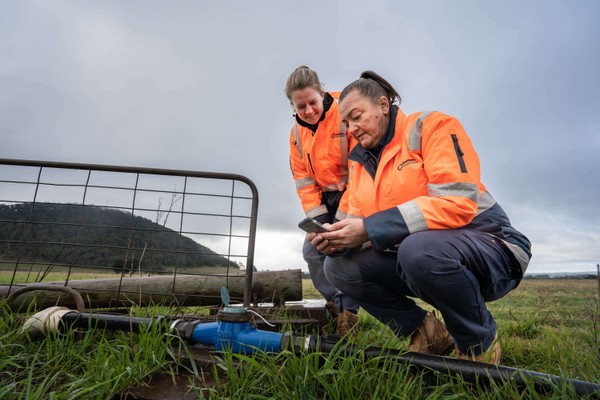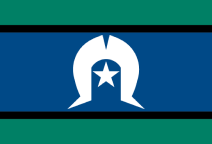About water for the environment
- Water for the environment has been a part of policy in Victoria since 1987 when an annual allocation of 27,600 ML of water was committed to the Victorian Murray wetlands through the Victorian Murray Wetlands Environmental Water Allocation. Water for the environment is water managed to maintain the health of rivers and wetlands.
- Water is specifically set aside for the environment in Victoria’s water management framework in three ways:
- Water entitlements (managed environmental water).
- Obligations on consumptive entitlements (passing flows and rules in management plans).
- Above cap water (water available above the total volume that can be allocated under entitlements for consumptive use).
This page presents information about the water entitlements and managed environmental water delivered during 2021-22. Other sections of the VWA website show water flows that benefit the environment, including:
- passing flows on bulk entitlements: this is water that is released from storages (such as reservoirs) to operate river and water distribution systems. Passing flows help maintain environmental values and other community benefits. On some bulk and environmental entitlements, passing flows are able to be flexibly managed (temporarily reduced, and then released at a later date) for the Victorian Environmental Water Holder. We report on passing flow compliance in the compliance section of each river basin local
- rules in management plans: When water is scarce, rosters, restrictions and bans are placed on licensed diversions from streams to ensure water is available for all users. These restrictions/bans are reported in the "Responding to availability" sections of the statewide Surface page and the river basin local
- water leaving the basin: Water leaving the basin is water that flows out of basins at their downstream ends. This includes all water flowing through the system, excluding diversions and losses. In terms of water for the environment, it includes managed environmental water delivered in-stream, obligations on consumptive entitlements (such as passing flows) and above cap water. We report on water leaving the basin in the statewide Surface page.
Above cap water is not able to be directly measured and is not reported in these accounts.
2021-22 overview
81 Wetlands
Water was delivered to 81 wetlands.
89 River reaches
Water was delivered to 89 river reaches.
91% watering actions achieved
242 of 265 of required watering actions were either fully or partially achieved.
The Victorian Environmental Water Holder (VEWH) is an independent statutory body responsible for managing Victoria's environmental water. The VEWH is part of a statewide partnership program which plans, manages, delivers and evaluates environmental water use.
2021-22 was VEWH’s tenth year managing water for the environment in Victoria. Each year, the number of watering actions that are delivered depends on seasonal and operational conditions experienced throughout the year.
In 2021-22:
- the VEWH’s Seasonal Watering Plan 2021-22 identified 309 potential watering actions across Victoria: 265 of these actions were required in 2021-22
- the VEWH coordinated delivery of environmental water to 89 priority river reaches and 81 wetlands, a total of 170 sites across Victoria (similar to the previous year – 171)
- 91% or 242 (of 265) actions were fully or partially achieved:
- Managed environmental water was used to deliver 184 environmental watering actions.
- Another 58 planned environmental watering actions occurred naturally or were achieved via other means including passing flows and the coordinated use of consumptive water en-route to downstream users.
Visit the VEWH’s to view and download publications for 2021-22 and more.
Managed environmental water
Managed environmental water is held in 14 Victorian river basins. Most of the water entitlements held for the environment are specified as a legal right to a share of the water available in storages that can be released to meet particular environmental needs. Carryover, trade and seasonal allocation provisions are typically the same as water entitlements held for consumptive purposes.
Environmental entitlements are held in Victorian river basins for environmental purposes by the VEWH, the Commonwealth Environmental Water Holder (CEWH) and the Murray–Darling Basin Authority (MDBA) (for The Living Murray program).
In 2021-22, the total volume of VEWH, CEWH and MDBA managed environmental water available (before trade) was 2,659,992 ML, which was more than the year before. Of this, 1,015,677 ML was delivered during the year to priority river reaches and wetlands in Victoria.
Table 1 provides a summary of water availability (pre-trade) and deliveries of managed environmental water for 2021-22. It includes the volume delivered in Victoria and through to South Australia. Download the data for 2020-21 to .
Table 1: Summary of managed water for the environment
Return flows In some systems, water for the environment delivered through upstream sites can be used again downstream without impacting other entitlement holders. This helps to ensure it is used efficiently and effectively to achieve optimal environmental benefits. Access to return flows for the environment is enabled through rules in the VEWH’s bulk and environmental entitlements. In 2021-22, a total of 607,709 ML was re-credited to the VEWH’s accounts for return flows delivered through upstream sites to the Murray River, more than the 417,690 ML the previous year. Also, 70,025 ML delivered in the Goulburn River between Lake Eildon and Goulburn Weir was re-credited to the VEWH in Waranga Basin (13,637 ML in 2020-21). No water was re-credited in Melton Reservoir from Lake Merrimu in the Werribee system in 2021-22 (561 ML in 2020-21). |
Trade
Water trading allows the environmental water holders to move water to the systems where it is most needed and to manage some of the variability in water availability across systems and across years. Two general types of trade are undertaken – administrative transfers and commercial allocation trade.
In 2021-22, the following transfers occurred:
- Water transferred from the Goulburn to meet environmental watering demands in the Loddon and Campaspe systems.
- Transfers of the VEWH and the Living Murray allocation to minimise the risk of carryover spill.
- 608,067 ML was transferred to South Australia for use in the South Australian Murray system.
- 88,627 ML was transferred to the Snowy Mountains Scheme inter-valley transfer account.
- The Taungurung Land and Water Council Aboriginal Corporation transferred 36 ML of water allocation to the VEWH for delivery in the Ovens system (King River) for environmental and cultural outcomes.
In 2021-22, allocation trades undertaken by the VEWH included:
- 12,874 ML sold to non-environmental users. The majority of this (12,000 ML) was sold in the Murray trading zone 7 following VEWH’s assessment that environmental outcomes had been maximised due to wetter conditions and there was sufficient carryover to meet 2022-23 requirements.
Table 2: Summary of key trade activities undertaken by environmental water holders
Entitlements, availability and use
Table 3 summarises, per river basin, the volume of environmental entitlements as at 30 June 2022 and shows how much water was made available, traded and delivered during the water year.
Entitlements can have different reliabilities (or securities of supply). Table 3 below shows the total entitlement volume for each reliability, which are:
- high (reliability): secure entitlements to a defined share of water; full allocations are expected in most years
- low (reliability): secure entitlements to a defined share of water; full allocations are expected only in some years
- provisional: entitlements that provide access to water based on specific conditions in the related bulk or environmental entitlement
- unregulated: entitlements linked to flow conditions in the river rather than volumes of water in a storage; unregulated entitlements permit diversion of in-river flows above a certain height or rate or flows that are in excess of what can be captured in storage
- share of inflows: shares of inflows into water storages that can be released to meet particular environmental needs.
In some systems, the VEWH is able to carry over unused water from one year to support watering actions in subsequent years. Carryover provides flexibility and enables water for the environment to be delivered when it is of the greatest value to the environment.
In 2021-22, 2,659,992 ML was made available under these entitlements during the year (before trade) (2,167,292 ML in 2020-21). Of the volume available, 1,015,677 ML was used for environmental benefits within Victoria (656,717 ML in 2020-21).
Table 3: Environmental water availability and use (ML)
Snowy Water Initiative
The Snowy Water Initiative was formally established in 2002 to increase flows in the Snowy River — in response to the impacts the Snowy Mountains Scheme (Snowy Scheme) was having on the river’s health — by regulating and diverting large volumes of water into the Murray-Darling Basin. As part of this initiative, the Victorian, New South Wales and Commonwealth governments committed to recovering water from the Murray-Darling Basin to increase flows in the Snowy and Murray rivers.
The Victorian Government met its commitment to recover water from the Murray, Goulburn and Loddon systems by 2012. This resulted in the creation of water entitlements, which are now held by the VEWH. Each year, the water allocated to these entitlements as of 31 January is transferred to the Snowy Scheme, where it is made available for release into the Snowy and Murray rivers for environmental benefit.
These transfers reduce the amount of water Snowy Hydro Limited is required to release from the Snowy Scheme to the Murray in the following year. In accordance with intergovernmental agreements, two-thirds of the withheld water is released to the Snowy River for environmental benefit, and the remaining third (up to 70,000 ML) provides flows for the environment in the Murray River.
In January 2022:
- a total of 285,310 ML was transferred to the Snowy Scheme in 2021-22 (including New South Wales contributions). Of this volume:
- 215,310 ML was assigned for release to the Snowy River (Snowy River Increased Flows)
- 70,000 ML was assigned for release to the Murray River (River Murray Increased Flows).
Table 4: Water available under Snowy Water Initiative
In 2021-22, water allocation recovered under the Snowy Water Initiative was released for environmental benefit in both the Snowy and Murray rivers. A total of 200,200 ML of Snowy River Increased Flows was released to the Snowy River from Jindabyne Dam, in addition to the 8,500 ML base passing flow and 500 ML riparian flow released from Mowamba Weir. 112,000 ML of River Murray Increased Flows (RMIF) was released from the Snowy Scheme to the Murray system.






